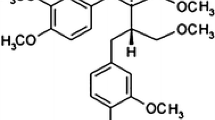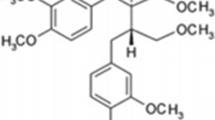Abstract
The present study is aiming at evaluating the hepatoprotective and antioxidant effects of Glycyrrhiza glabra extract (2.5, 5 and 10 μg/ml) on the carbon tetrachloride (CCl4)-induced carp hepatocyte damage in vitro. Glycyrrhiza glabra extract was added to the carp primary hepatocytes before (pre-treatment), after (post-treatment) and both before and after (pre- and post-treatment) the incubation of the hepatocytes with CCl4. CCl4 at 8 mM in the culture medium produced significantly elevated levels of lactate dehydrogenase (LDH), glutamate oxalate transaminase (GOT), glutamate pyruvate transaminase (GPT) and malondialdehyde (MDA) and significantly reduced levels of superoxide dismutase (SOD) and glutathione peroxidase (GSH-Px). Pre-treatment (5 μg/ml) and pre- and post-treatment (5 and 10 μg/ml) of the hepatocytes with Glycyrrhiza glabra extract significantly reduced the elevated levels of LDH, GOT, GPT and MDA and increased the reduced levels of SOD and GSH-Px by CCl4; post-treatment of the hepatocytes with Glycyrrhiza glabra extract at 5 μg/ml reduced the GPT and GOT levels and increased the GSH-Px level, but had no effect on the other parameters at all the studied concentrations. The results support the use of Glycyrrhiza glabra extract as a hepatoprotective and antioxidant agent in fish.






Similar content being viewed by others
References
Bickley LK, Lange A, Winter MJ, Tyler CR (2009) Evaluation of a carp primary hepatocyte culture system for screening chemicals for oestrogenic activity. Aquat Toxicol 94:195–203
Cabello FC (2006) Heavy use of prophylactic antibiotics in aquaculture: a growing problem for human and animal health and for the environment. Environ Microbiol 8:1137–1144
Cheel J, Antwerpen PV, Tumova L, Onofre G, Vokurkova D, Zouaoui-Boudjeltia K, Vanhaeverbeek M, Neve J (2010) Free radical-scavenging, antioxidant and immunostimulating effects of a licorice infusion (Glycyrrhiza glabra L). Food Chem 122:508–517
Cheng YB, Pan TS, Hou GJ, Shi PS, Cao YH, Wang YJ (2008) Effect of different Chinese medicinal herbal additives on the growth and prevention of “the liver and gall syndrome” in Grass Carp (Ctenopharyngodon idella). Anhui Agric Sci Bull 14:146–155
Clawson GA (1989) Mechanisms of carbon tetrachloride hepatotoxicity. Pathol Immunopathol Res 8:104–112
Demirdag K, Bakcecioglu IH, Ozercan IH, Ozden M, Yilmaz S, Kalkan A (2004) Role of L-carnitine in the prevention of acute liver damage induced by carbon tetrachloride in rats. J Gastroenterol Hepatol 19:333–338
Esterbauer H (1985) Lipid peroxidation products: formation, chemical properties and biological activities. In: Poli G, Cheeseman KH, Dianzani MU, Slater TF (eds) Free radicals in liver injury. IRL Press, Oxford, pp 29–47
Gebhardt R, Fausel M (1997) Antioxidant and hepatoprotective effects of artichoke extracts and constituents in cultured rat hepatocytes. Toxicol In Vitro 11:669–672
Gutteridge JMC (1995) Lipid peroxidation and antioxidants as biomarkers of tissue damage. Clin Chem 41:1819–1828
Hu YY, Liu CH, Wang RP, Liu C, Liu P, Zhu DY (2000) Protective actions of salvianolic acid A on hepatocyte injured by peroxidation in vitro. World J Gastroenterol 6:402–404
Hu C, Chen WK, Liao PH, Yu WC, Lee YJ (2001) Synergistic effect of cadmium chloride and acetaldehyde on cytotoxicity and its prevention by quercetin and glycyrrhizin. Mutat Res 496:117–127
Isbrucker RA, Burdock GA (2006) Risk and safety assessment on the consumption of Licorice root (Glycyrrhiza sp.), its extract and powder as a food ingredient, with emphasis on the pharmacology and toxicology of glycyrrhizin. Regul Toxicol Pharmacol 46:167–192
Kamei J, Nakamura R, Ichiki H, Kubo M (2003) Antitussive principles of Glycyrrhizae radix, a main component of the Kampo preparations Bakumondo-to (Mai-men-dong-tang). Eur J Pharmacol 469:159–163
Kim SC, Byun SH, Yang CH, Kim CY, Kim JW, Kim SG (2004) Cytoprotective effects of Glycyrrhizae radix extract and its active component liquiritigenin against cadmium-induced toxicity (effects on bad translocation and cytochrome c-mediated PARP cleavage). Toxicol 197:239–251
Koneri R, Balaraman R, Firdous Vinoth, Kumar M (2008) Hepatoprotective effects of Momordica Cymbalaria Fenzl. against carbon tetrachloride induced hepatic injury in rats. Pharmacologyonline 1:365–374
Kotsanis N, Metcalfe CD (1991) Enhancement of hepatocarcinogenesis in rainbow trout with carbon tetrachloride. Bull Environ Contam Toxicol 46:879–886
Kumar R, Sharma BK, Sharma LL (2007) Impact of Glycyrrhiza glabra linn. as growth promoter in the supplementary feed of an indian major carp Cirrhinus mrigala (Ham). Indian J Anim Res 41:35–38
Lee CY, Peng WH, Cheng HY, Chen FN, Lai MT, Chui TH (2006) Hepatoprotective effect of Phyllanthus in Taiwan on acute liver damage induced by carbon tetrachloride. Am J Chin Med 34:471–482
Li N, Wang R, Zhang J, Fu Z, Zhang X (2009) Developing a knowledge-based early warning system for fish disease/health via water quality management. Expert Syst Appl 36:6500–6511
Mansour MA (2000) Protective effects of thymoquinone and desferrioxamine against hepatotoxicity of carbon tetrachloride in mice. Life Sci 66:2583–2591
Meng X, Ding Q (2004) The causes of fish “liver and gall syndrome” and methods for prevention and control. Reserv Fish 24:65
Myers MS, Landahl JT, Krahn MM, Johnson LL, McCain BB (1990) Overview of studies on liver carcinogenesis in English sole from Puget Sound; evidence for a xenobiotic chemical etiology I: pathology and epizootiology. Sci Total Environ 94:33–50
Myers MS, Landahl JT, Krahn MM, McCain BB (1991) Relationship between hepatic neoplasms and related lesions and exposure to toxic chemicals in marine fish from tire US west coast. Environ Health Perspect 90:7–15
Nagai T, Egashira T, Yamanaka Y, Kohno M (1991) The protective effect of glycyrrhizin against injury of the liver caused by ischemia-reperfusion. Arch Environ Contaim Toxicol 20:432–436
Nagai T, Egashira T, Kudo Y, Yamanaka Y, Shimada T (1992) Attenuation of dysfunction in the ischemia-reperfused liver by glycyrrhizin. Japan J pharmacol 58:209–218
Nakamura T, Fujii T, lchihara A (1985) Enzyme leakage due to change of membrane permeability of primary cultured rat hepatocytes treated with various hepatotoxins and its prevention by glycyrrhizin. Cell Biol Toxicol 1:285–295
Nimmo IA (1987) The glutathione S-transferases of fish. Fish Physiol Biochem 3:163–172
OECD (1993) Guidelines for the testing of chemicals. vol 1, guideline 203
Okuda K, Tamura Y, Yamamoto M, Inoue Y, Takagaki R, Takahashi K, Demizu S, Kajiyama K, Hiraga Y, Kinoshita T (1989) Identification of antimicrobial and antioxidant constituents from licorice of Russian and Xinjing origin. ChemPharm Bull 37:2528–2530
Pärt P, Norrgren L, Bergström E, Sjöberg P (1993) Primary cultures of epithelial cells from rainbow trout gills. J Exp Biol 175:219–232
Pérez-Trueba G, Ramos-Guanche C, Martínez-Sánchez B, Márquez-Hernández I, Giuliani A, Martínez-Sánchez G (2003) Protective effect of gossypitrin on carbon tetrachloride-induced in vivo hepatotoxicity. Redox Rep 8:215–221
Pesonen M, Goksoyr A, Andersson T (1992) Expression of P4501A1 in a primary culture of rainbow trout hepatocytes exposed to b-naphthoflavone or 2, 3, 7, 8-tetrochlorodibenzo-pdioxin. Arch Biochem Biophys 292:228–233
Rahman S, Sultana S (2006) Chemopreventive activity of glycyrrhizin on lead acetate mediated hepatic oxidative stress and its hyperproliferative activity in Wistar rats. Chem Biol Interact 16:61–69
Rajesh MG, Latha MS (2004) Protective activity of Glycyrrhiza glabra Linn. on carbon tetrachloride-induced peroxidative damage. Indian J Pharmacol 36:284–287
Recknagel RO, Glende EA (1973) Carbon tetrachloride hepatotoxicity: an example of lethal cleavage. CRC Crit Rev Toxicol 2:263–297
Ribergh CMI, Lipsky MM (1997) Toxicity of chloroform and carbon tetrachloride in primary cultures of rainbow trout hepatocytes. Aquat Toxicol 37:169–182
Shen X, Tang Y, Yang R, Yu L, Fang T, Duan JA (2009) The protective effect of Zizyphus jujube fruit on carbon tetrachloride-induced hepatic injury in mice by anti-oxidative activities. J Ethnopharmacol 122:555–560
Sheweita SA, El-Gabar MA, Bastawy M (2001) Carbon tetrachloride-induced changes in the activity of phase II drug-metabolizing enzyme in the liver of male rats: role of antioxidants. Toxicol 165:217–224
Smeets JMW, Rankouhi TR, Nichols KM, Komen H, Kaminski NE, Giesy JP, Berg M (1999) In vitro vitellogenin production by carp (Cyprinus carpio) hepatocytes as a screening method for determining (anti) estrogenic activity of xenobiotics. Toxicol Appl Pharmacol 157:68–76
Toshihiro O (2000) The protective effect of glycyrrhizin on anti-Fas antibody-induced hepatitis in mice. Eur J Pharmacol 387:229–232
Triebskorn R, Casper H, Heyd A, Eikemper R, Köhler HR, Schwaiger J (2004) Toxic effects of the non-steroidal anti-inflammatory drug diclofenac, part II. cytological effects in liver, kidney, gills and intestine of rainbow trout (Oncorhynchus mykiss). Aquat Toxicol 68:151–166
Tripathi M, Singh BK, Kakkar P (2009) Glycyrrhizic acid modulates t-BHP induced apoptosis in primary rat hepatocytes. Food Chem Toxicol 47:339–347
Visavadiya NP, Soni B, Dalwadi N (2009) Evaluation of antioxidant and anti-atherogenic properties of Glycyrrhiza glabra root using in vitro models. Int J Food Sci Nutr 60:135–149
Wan X, Ma T, Wu W, Wang Z (2004) EROD activities in a primary cell culture of grass carp (Ctenopharyngodon idellus) hepatocytes exposed to polychlorinated aromatic hydrocarbonas. Ecotoxicol Environ Safe 58:84–89
Wang GS, Han ZW (1993a) The protective action of glycyrrhiza flavonoids against carbon tetrachloride induced hepatotoxicity in mice. Acta Pharmaceutica Sinica 28:572–576
Wang GS, Han ZW (1993b) Effects of flavonoids of glycyrrhiza on ethanol-induced liver injury in mice. Chin Pharmacol Bull 9:271–273
Wang ZY, Nixon DW (2001) Licorice and cancer. Nutr Cancer 39:1–11
Weisburger EK (1977) Carcinogenicity studies on halogenated hydrocarbons. Environ Health Perspect 21:7–16
Winston GW, DiGiulio RT (1991) Prooxidant and antioxidant mechanisms in aquatic organisms. Aquat Toxicol 19:137–161
Winston GW, Moore MN, Kirchin MA, Soverchia C (1996) Production of reactive oxygen species by hemocytes from the marine mussel, Mytilus edulis: lysosomal localization and effect of xenobiotics. Comp Biochem Physiol C Pharmacol Toxicol Endocrinol 113:221–229
Zhou X, Zhu G, Sun J, Jilisa M (2002) The liver cellur DNA breaks and repair of the fish (Carassius auratus) induced by the sublethal metal mixture. Nucl Techn 25:408–412
Zhou B, Liu C, Wang J, Lam PKS, Wu RSS (2006) Primary cultured cells as sensitive in vitro model for assessment of toxicants-comparison to hepatocytes and gill epithelia. Aquat Toxicol 80:109–118
Acknowledgments
This study was funded by Ministry of Science and Technology of the People’s Republic of China (2009DFA32620) and co-funded by Department of science and technology of Jiangsu (BZ2008008), Wuxi Municipal Bureau on Science and Technology (CZE00906) and Central Public-interest Scientific Institution Basal Research Fund (6-115009).
Author information
Authors and Affiliations
Corresponding authors
Rights and permissions
About this article
Cite this article
Yin, G., Cao, L., Xu, P. et al. Hepatoprotective and antioxidant effects of Glycyrrhiza glabra extract against carbon tetrachloride (CCl4)-induced hepatocyte damage in common carp (Cyprinus carpio). Fish Physiol Biochem 37, 209–216 (2011). https://doi.org/10.1007/s10695-010-9436-1
Received:
Accepted:
Published:
Issue Date:
DOI: https://doi.org/10.1007/s10695-010-9436-1




